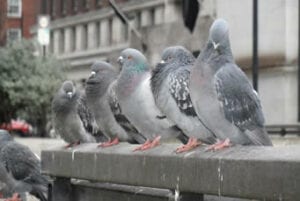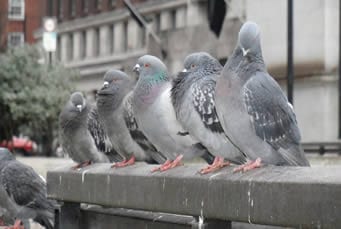
by Pigeon Patrol | Sep 7, 2021 | Pigeon Predators, Pigeon Spikes, Pigeons, Pigeons in the News, Raccoons, Sparrows
BAD AXE — A 24-year-old Pigeon man must spend about three more months in jail for stealing and pawning nearly $20,000 worth of jewelry belonging to a friend’s mother.
Matthew J. Rousse was sentenced to 120 days in the Huron County Jail, with credit for 29 days already served, and two years of probation.
Sentencing was delayed in September when Rousse was receiving in-patient substance abuse treatment, Bay City Times records show.
Rousse pleaded guilty in July to one count of larceny less than $20,000.
From Oct. 1, 2009, to March 5, Rousse took a $2,096 wedding band, a $3,180 diamond ring and various gold chains and charms, investigators said.
He pawned the goods in Saginaw and Bay City, authorities said.
Source
Pigeon Patrol Products & Services is the leading manufacturer and distributor of bird deterrent (control) products in Canada. Pigeon Patrol products have solved pest bird problems in industrial, commercial, and residential settings since 2000, by using safe and humane bird deterrents with only bird and animal friendly solutions. At Pigeon Patrol, we manufacture and offer a variety of bird deterrents, ranging from Ultra-flex Bird Spikes with UV protection, Bird Netting, 4-S Bird Gel and the best Ultrasonic and audible sound devices on the market today.
Voted Best Canadian wholesaler for Bird Deterrent products ten years in a row.
Contact us at 1- 877– 4– NO-BIRD, (604) 585-9279 or visit our website at www.pigeonpatrol.ca
Pigeon/Pigeon Patrol / Pigeons Roosting / Vancouver Pigeon Control /Bird Spikes / Bird Control / Bird Deterrent / Pigeon Deterrent? Surrey Pigeon Control / Pest /Seagull deterrent / Vancouver Pigeon Blog / Birds Inside Home / Pigeons in the cities / Ice Pigeons/ What to do about pigeons/ sparrows , Damage by Sparrows, How To Keep Raccoons Away, Why Are Raccoons Considered Pests/ De-fence / Pigeon Nesting/ Bird Droppings / Pigeon Dropping/ woodpecker control/ Professional Bird Control Company/ Keep The Birds Away/ Birds/rats/ seagull/pigeon/woodpecker/ dove/sparrow/pidgeon control/pidgeon problem/ pidgeon control/flying rats/ pigeon Problems/ bird netting/bird gel/bird spray/bird nails/ bird guard
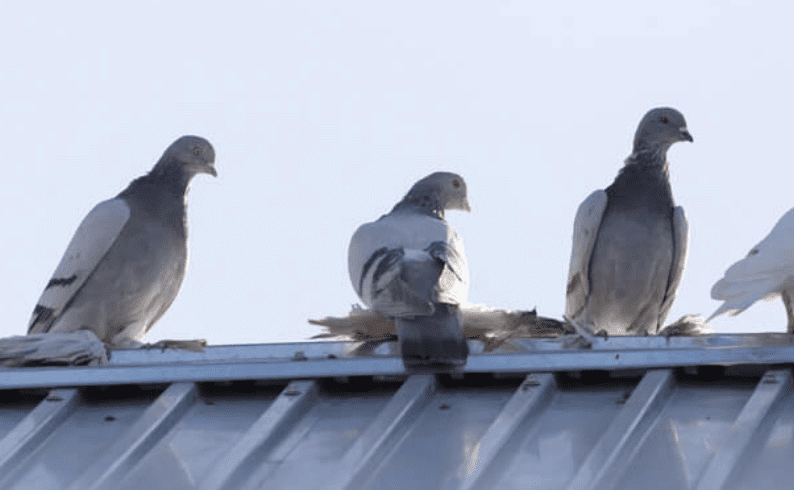
by Pigeon Patrol | Sep 7, 2021 | Pigeon Patrol's Services, Pigeon Predators, Pigeon Spikes, Pigeons, Pigeons in the News, Raccoons
An introduction to pigeon shooting
Managing pigeon numbers through shooting to prevent damage of crops is carried out in different ways at different times of year.
It’s a skill that takes time to learn. Successful pigeon shooting demands fieldcraft, reconnaissance skills and, needless to say, straight shooting.
An estimated 5.4million pairs of woodpigeons now live in the UK.
In 2014, the Government looked at the damage done by pigeons to crops and asked farmers to estimate how much it cost them. They estimated a figure of £75 million for woodpigeon damage to oilseed rape crops alone every year.
Brassicas are also great favourites of pigeons. Experts from the Agriculture and Horticulture Development Board estimated losses for farmers growing crops such cabbage, broccoli and kale to pigeons of between £330 and £1,250 per hectare. Cereal crops are also attacked, particularly when they are mature.
Fenland farmer Richard Gilbert said: “Here in the Fens it’s just a waste of time sowing a field with rape if there are any trees or hedges around the perimeter or power lines crossing the field.”
Types of pigeon shooting
Roosting pigeons
In this form of pigeon shooting the Gun shoots the pigeons as they are returning to the woods where they roost . All it requires is permission from the farmer or landowner, a gun, and cartridges.
The favoured roosting woods for pigeons contain fir trees, surrounded by hardwood trees such as beeches and oaks. The former provides warmth and shelter and the latter can provide food.
Roosting tends to take place at the end of the shooting season, from the end of January until about the end of March. Pigeon shooter and Shooting Times contributor Tom Payne advises: “I roost pigeons from November until the end of March but due to the shooting season most roost shooting doesn’t start until the end of February. The tree branches are still visible then and pheasant shooting has finished. “
Flighting pigeons
In this discipline you are shooting the pigeons as they are going from their roosting position to feed along their chosen flight line, or returning to roost on their way back from feeding.
First of all you need to discover an established pigeon feeding ground. While out of sight, so you don’t disturb any pigeons, watch the birds fly in and out, taking careful note of the lines they are taking. (A pair of binoculars is very helpful here.) Tom Payne advises: “Pigeons are creatures of habit and will follow a line religiously, so to be successful you have got to be close to it or under it.”
Decoying pigeons
Tom Payne: “To decoy pigeons you first have to find their chosen feeding field and then establish how they are getting there. That is your reconnaissance. The fieldcraft part of decoying is putting your hide in the correct place and placing your decoys correctly over their chosen food source.
Pigeon shooters use flappers, magnets and floaters, which are decoys that mimic the behaviour of live pigeons.
Pigeons feed in company. If they spot other pigeons feeding in a field they will come down to investigate the food source, whilst the shooter is obscured out of sight, gun at the ready.
Tom Payne advises: “Being in the right position is the key to being able to decoy pigeons successfully. Being in the wrong position by 40 yards can completely change the way birds react to your decoys. The way I decoy is to represent what I see during my reconnaissance. If birds are feeding in small groups spread apart, I will copy this when I put out my decoys. Birds feed differently on every crop. This is due to the amount and density of food available and the time of year.”
The flightlines of pigeons are not fixed and vary with changes in the wind and food. Pigeons need to adapt to survive, so the lines they follow are never quite the same.
During the winter months birds flock but as they move into the spring and summer months pigeons start to disperse from small groups into singles and pairs.
Decoys tend to work more successfully in the summer months because individual birds or pairs are coming out to feed, rather than flocking. It is easier to shoot individual birds and so harder to decoy during the winter months, when birds are flying together, unless you are shooting in wind conditions which break up the flocks.
What crops to shoot pigeons over and when
Oilseed winter rape, depending on its level of growth, will attract considerable pigeon attention. As you move into the spring months failed or backward rape will attract attention.
In February and March frosted crops such as cabbages, cauliflower and sprouts will attract their attention, as well as early spring clover.
In spring, the pigeon shooter will be focused on controlling pigeons from spring drillings to protect newly sown crops. The experienced shooter will know when the fields are being drilled from conversations with the farmer and will give the pigeons a few days to discover the new drilllings.
By April late spring drillings and peas can bring decent bags. Come June the pigeon shooter will be watching fields of peas or seeds.
Laid cereal crops will attract the attention of pigeons in July.
During harvest time pigeons can be found on almost any harvested crops. During hot weather they may well be discovered on remote drinking areas.
Your geographic location will also dictate when you are most likely to be successful on certain crops. Tom Payne advises: “Certain crops change depending on the weather that year. You could be shooting barley in early June. Follow the agricultural calendar and remember that the harvest is different in Cornwall from Scotland, the south could be a month ahead of the north. Always talk to a local about the conditions.”
How to get a pigeon shooting permission
Your local farmer or landowner will need to have confidence in the person asking for a permission so take the time to get to know them. They aren’t going to let anybody shoot their land unless they trust them. Shooting Times contributor Simon Garnham writes: “If you never ask, you’ll never know…. If the rape is being hammered by pigeons you may be the answer to a food producer’s prayer.”
Tom Payne says that the best time of year to ask for a permission is in the winter, particularly when pigeons are after winter rape. A farmer may be more receptive then as he wants his newly sown crops protected in the coming months.
When you speak to the farmer dress appropriately and don’t wear camouflage. You want to look approachable. It’s always worth writing a letter giving your experience and how you will go about pigeon shooting.
All aspects of the new general licence reviews should be followed and any possible changes adhered to.
You’ll find a full guide to getting pigeon shooting permission here.
Guns and ammunition for pigeon shooting
Use any gun in which you have confidence and which is a good fit. It could be an over-under, side-by-side or semi-automatic. Tom Payne’s favourite cartridge for pigeon shooting is a Hull High Pheasant Extreme 32g No 5 because “they are smooth and hard hitting”.
Shooting Times recently tested steel shot against lead shot for pigeon shooting and discovered that steel performs as well as lead. The shot penetrates deeper because it travels faster, passing straight through the bird rather than remaining within the carcass.
Source
Pigeon Patrol Products & Services is the leading manufacturer and distributor of bird deterrent (control) products in Canada. Pigeon Patrol products have solved pest bird problems in industrial, commercial, and residential settings since 2000, by using safe and humane bird deterrents with only bird and animal friendly solutions. At Pigeon Patrol, we manufacture and offer a variety of bird deterrents, ranging from Ultra-flex Bird Spikes with UV protection, Bird Netting, 4-S Bird Gel and the best Ultrasonic and audible sound devices on the market today.
Voted Best Canadian wholesaler for Bird Deterrent products ten years in a row.
Contact us at 1- 877– 4– NO-BIRD, (604) 585-9279 or visit our website at www.pigeonpatrol.ca
Pigeon/Pigeon Patrol / Pigeons Roosting / Vancouver Pigeon Control /Bird Spikes / Bird Control / Bird Deterrent / Pigeon Deterrent? Surrey Pigeon Control / Pest /Seagull deterrent / Vancouver Pigeon Blog / Birds Inside Home / Pigeons in the cities / Ice Pigeons/ What to do about pigeons/ sparrows , Damage by Sparrows, How To Keep Raccoons Away, Why Are Raccoons Considered Pests/ De-fence / Pigeon Nesting/ Bird Droppings / Pigeon Dropping/ woodpecker control/ Professional Bird Control Company/ Keep The Birds Away/ Birds/rats/ seagull/pigeon/woodpecker/ dove/sparrow/pidgeon control/pidgeon problem/ pidgeon control/flying rats/ pigeon Problems/ bird netting/bird gel/bird spray/bird nails/ bird guard
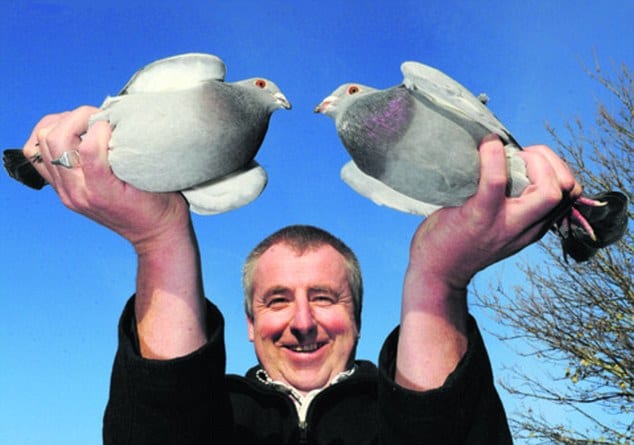
by Pigeon Patrol | Sep 7, 2021 | Pigeon Predators, Pigeon Spikes, Pigeons, Pigeons in the News
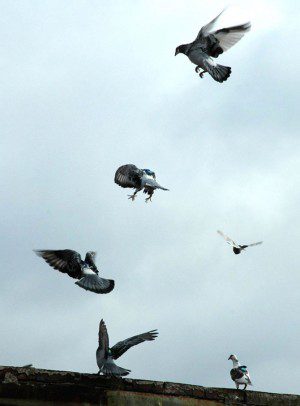
by Pigeon Patrol | Aug 31, 2021 | Pigeon Spikes, Pigeons, Pigeons in the News, Raccoons, Sparrows, UltraSonic Bird Control
Even the bird-brained can follow a leader. When pigeons fly in flocks, each bird falls behind another with better navigational skill, and the savviest among them leads the flock, scientists report in the April 8 Nature.
The research suggests hierarchies can serve peaceful purposes in the animal kingdom, where dominance by brute force is often the rule. “A pecking order tends to be just that — a pecking order,” says Iain Couzin of Princeton University, an expert in collective behavior who was not involved in the research.
The research also suggests that for pigeons, dominance isn’t set in stone. While one bird often emerged as the leader, other birds also stepped up. This flexibility in leadership had previously been seen only in some small groups of fish.
From schools to packs to swarms to flocks, collective behavior is widespread among animals. But in many cases, the important interactions are with nearest neighbors, and control of the group’s movement is distributed among members rather than hierarchical.

Biological physicist Tamás Vicsek of Eötvös Loránd University in Budapest and his colleagues studied flight dynamics in homing pigeons, which fly in flocks but conveniently return to their roosts. The researchers outfitted 13 pigeons with tiny backpacks carrying GPS devices that measured shifts in birds’ flight direction five times per second. Flocks of eight to 10 birds flew with the devices during homing flights (a roughly 14-kilometer trip back to the roost) and spontaneous “free” flights near home. Each bird also flew solo flights of about 15 kilometers each.
Analysis of GPS logs showed that for each excursion, the flock had one leader followed by at least three or four other birds. Each of these followers was in turn followed by other birds in the flock. Comparing the solo flight paths to the group flights showed that the birds with the best navigational skills led the flock.
While flocks have hierarchies, they’re not dictatorships, notes Vicsek. One bird led eight of the 13 flights, while other birds took the lead on the rest of the trips. Vicsek likens the dynamics to a group of peers deciding where to eat dinner. “Maybe someone knows the area restaurants best, or there is a person who’s a gourmand — or maybe they are the most outspoken,” he says. This one person might pick the place to eat for several nights, although another person might chime in now and then. And then there is the person with no say, whom everyone knows has terrible taste in food.
“These pigeons know each other. They know which is the smartest. The fastest bird will even follow the slower one who knows the way home the best,” say Vicsek. Videos of the birds’ positions during flight showed that if the best navigator moves a little to the left, it takes about a third of a second for other birds to do the same. But if the least savvy bird makes a move “the others don’t care,” Vicsek says.
Pigeons’ brains may be wired for follow-the-leader, comments behavioral neuroscientist Lucia Jacobs of the University of California, Berkeley. When the left eye sees something, for example, it sends all the visual information to the right brain hemisphere, and vice versa. This “extreme lateralization” may play a role in organizing flocks, the new work suggests. A pigeon following another was most likely to be flying on its partner’s right, seeing this leader with its left eye. “It’s very cool,” Jacobs says.
Source
Pigeon Patrol Products & Services is the leading manufacturer and distributor of bird deterrent (control) products in Canada. Pigeon Patrol products have solved pest bird problems in industrial, commercial, and residential settings since 2000, by using safe and humane bird deterrents with only bird and animal friendly solutions. At Pigeon Patrol, we manufacture and offer a variety of bird deterrents, ranging from Ultra-flex Bird Spikes with UV protection, Bird Netting, 4-S Bird Gel and the best Ultrasonic and audible sound devices on the market today.
Voted Best Canadian wholesaler for Bird Deterrent products ten years in a row.
Contact us at 1- 877– 4– NO-BIRD, (604) 585-9279 or visit our website at www.pigeonpatrol.ca
Pigeon/Pigeon Patrol / Pigeons Roosting / Vancouver Pigeon Control /Bird Spikes / Bird Control / Bird Deterrent / Pigeon Deterrent? Surrey Pigeon Control / Pest /Seagull deterrent / Vancouver Pigeon Blog / Birds Inside Home / Pigeons in the cities / Ice Pigeons/ What to do about pigeons/ sparrows , Damage by Sparrows, How To Keep Raccoons Away, Why Are Raccoons Considered Pests/ De-fence / Pigeon Nesting/ Bird Droppings / Pigeon Dropping/ woodpecker control/ Professional Bird Control Company/ Keep The Birds Away/ Birds/rats/ seagull/pigeon/woodpecker/ dove/sparrow/pidgeon control/pidgeon problem/ pidgeon control/flying rats/ pigeon Problems/ bird netting/bird gel/bird spray/bird nails/ bird guard
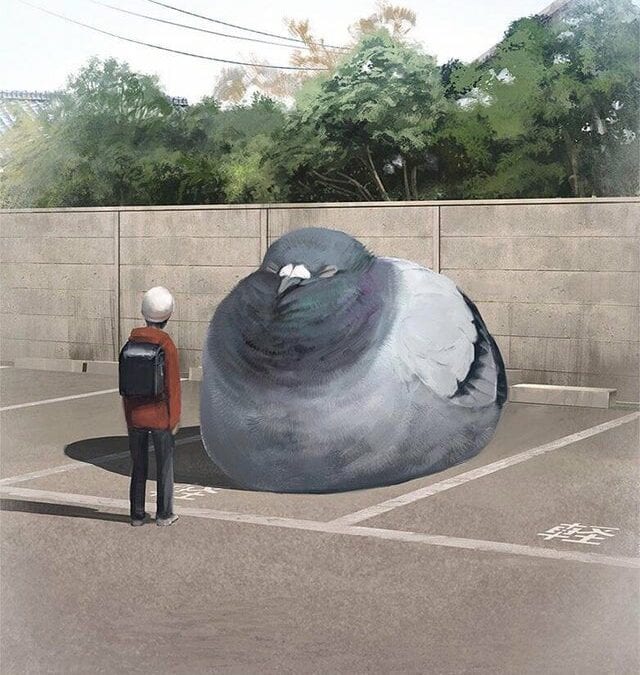
by Pigeon Patrol | Aug 31, 2021 | Pigeon Patrol's Services, Pigeon Predators, Pigeon Spikes, Pigeons, Pigeons in the News
Bully birds such as blue jays and European starlings are a nuisance, but you can take some simple steps to prevent them from dominating feeders—and allow less aggressive birds to enjoy your hospitality. Here’s how:
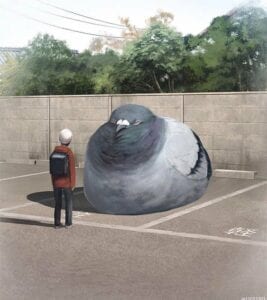
1. Go modern: New innovations in feeder construction can limit the size of birds able to feed in your yard—and bully birds are generally larger than most of the more “desirable” feeder birds. Look for a rubber-coated mesh that surrounds traditional tube, suet and tray feeders. It allows smaller birds to pass through and enter the feeding chamber. Bullies such as blackbirds, pigeons and crows can’t squeeze through. The downside is that desirable birds such as northern cardinals are also too large to enter.
2. Take cover: Starlings are known for their love of suet cakes, and it is not unusual for them to eat a whole cake in a single day. To stymie starlings, hang your suet feeder under a domed squirrel baffle or buy a starling-proof suet feeder, which allows birds access to food only from beneath the feeder. Starlings are reluctant to go under any sort of cover.
3. Catch seeds: Many people find that foiling bullies at feeders isn’t quite enough because they often eat the food that the other birds drop on the ground. To solve this problem, place a garbage can under a hanging feeder. The bullies are not likely to fly into the can to get the discarded seed.
4. Be selective: Selective feeding is another way to control the kinds of birds that eat at your feeders. Generally, bully birds do not like safflower or nyjer (thistle) seeds. By offering just those seeds—and not wild bird seed mixes—only finches, chickadees, nuthatches, cardinals and grosbeaks will come to the feeders to dine.
5. Aid acrobats: Bully species usually require a perch to hold onto while eating, but most finches and many other small feeder birds can eat without perching at food ports. Finches can cling to the sides of a tube feeder and eat all day long. Bullies can’t. Some commercial tube feeders have perches above the food ports, where the birds have to stretch downward to feed—something that bully birds can’t do either.
6. Use bottles: Thwart suet-eating bullies at a cagelike feeder by inserting a long perch that extends out both sides, placing a small soda bottle over each end. When a bully lands on a soda bottle, the weighty visitor rolls off the perch. Smaller birds are too light to roll off the bottles while feeding, or they can cling to the wire cage.
7. Offer alternatives: A male hummingbird is often aggressive and protective of a sugar-water feeder that he considers his own. Only “his females” and their young are allowed to feed undisturbed. The simple solution is to set up an additional sugar-water feeder on another side of your house, out of sight of the other male’s domain. He can’t guard a feeder that he can’t see.
8. Buy weights: Look for a bird feeder that has a weighted perch or treadle. When larger, heavier birds land on a treadle, it drops down over the bird food. (This device works against squirrels, too.) Lightweight birds can reach the food because the treadle does not drop down when they perch.
9. Hang mirrors: Birdhouses for woodpeckers, wood ducks and owls are often taken over by European starlings. To keep the foreigners at bay, place a small mirror on the back wall facing the entryway so that starlings see their own “scary” reflections when they land at the door. The mirror doesn’t seem to deter other birds.
10. Play music: Just when the strawberries and grapes are ready for picking, a variety of birds will descend on a garden patch to consume the fruit. One way to deter these critters is to set up a radio in the garden that plays loud music. It’ll scare even the boldest invaders.
Source
Pigeon Patrol Products & Services is the leading manufacturer and distributor of bird deterrent (control) products in Canada. Pigeon Patrol products have solved pest bird problems in industrial, commercial, and residential settings since 2000, by using safe and humane bird deterrents with only bird and animal friendly solutions. At Pigeon Patrol, we manufacture and offer a variety of bird deterrents, ranging from Ultra-flex Bird Spikes with UV protection, Bird Netting, 4-S Bird Gel and the best Ultrasonic and audible sound devices on the market today.
Voted Best Canadian wholesaler for Bird Deterrent products ten years in a row.
Contact us at 1- 877– 4– NO-BIRD, (604) 585-9279 or visit our website at www.pigeonpatrol.ca
Pigeon/Pigeon Patrol / Pigeons Roosting / Vancouver Pigeon Control /Bird Spikes / Bird Control / Bird Deterrent / Pigeon Deterrent? Surrey Pigeon Control / Pest /Seagull deterrent / Vancouver Pigeon Blog / Birds Inside Home / Pigeons in the cities / Ice Pigeons/ What to do about pigeons/ sparrows , Damage by Sparrows, How To Keep Raccoons Away, Why Are Raccoons Considered Pests/ De-fence / Pigeon Nesting/ Bird Droppings / Pigeon Dropping/ woodpecker control/ Professional Bird Control Company/ Keep The Birds Away/ Birds/rats/ seagull/pigeon/woodpecker/ dove/sparrow/pidgeon control/pidgeon problem/ pidgeon control/flying rats/ pigeon Problems/ bird netting/bird gel/bird spray/bird nails/ bird guard
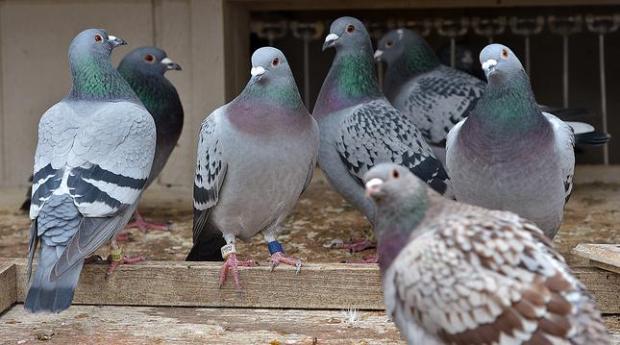
by Pigeon Patrol | Aug 26, 2021 | Pigeon Predators, Pigeon Spikes, Pigeons, Pigeons in the News, Raccoons, Sparrows
Birds brighten our lives. We find joy in their songs, inspiration in their soaring flight. They connect us with nature. But sometimes birds connect us a bit too directly with nature.
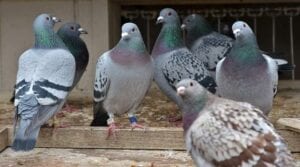
Park under the wrong tree – one where a flock of starlings or grackles comes to roost – and nature may be painted in white on your car so thickly that it takes a trip or two through the carwash just to see through the windshield again.
Aside from helping you decide where not to park next time, this messy event raises a scientific question: Why is most of the bird poop we see white? The answer lies in the fact that birds, unlike mammals, don’t produce urine. Instead they excrete nitrogenous wastes in the form of uric acid, which emerges as a white paste. And uric acid doesn’t dissolve in water easily. Hence its ability to stick to your windshield like blobs of white plaster.
It appears that drivers of some cars might be asking for trouble. A study in England found that red cars are most likely to be the target of bird droppings, followed by blue and black. Green was the least likely. So be careful where you park. And give that red Mustang a wide berth.
Source
Pigeon Patrol Products & Services is the leading manufacturer and distributor of bird deterrent (control) products in Canada. Pigeon Patrol products have solved pest bird problems in industrial, commercial, and residential settings since 2000, by using safe and humane bird deterrents with only bird and animal friendly solutions. At Pigeon Patrol, we manufacture and offer a variety of bird deterrents, ranging from Ultra-flex Bird Spikes with UV protection, Bird Netting, 4-S Bird Gel and the best Ultrasonic and audible sound devices on the market today.
Voted Best Canadian wholesaler for Bird Deterrent products ten years in a row.
Contact us at 1- 877– 4– NO-BIRD, (604) 585-9279 or visit our website at www.pigeonpatrol.ca
Pigeon/Pigeon Patrol / Pigeons Roosting / Vancouver Pigeon Control /Bird Spikes / Bird Control / Bird Deterrent / Pigeon Deterrent? Surrey Pigeon Control / Pest /Seagull deterrent / Vancouver Pigeon Blog / Birds Inside Home / Pigeons in the cities / Ice Pigeons/ What to do about pigeons/ sparrows , Damage by Sparrows, How To Keep Raccoons Away, Why Are Raccoons Considered Pests/ De-fence / Pigeon Nesting/ Bird Droppings / Pigeon Dropping/ woodpecker control/ Professional Bird Control Company/ Keep The Birds Away/ Birds/rats/ seagull/pigeon/woodpecker/ dove/sparrow/pidgeon control/pidgeon problem/ pidgeon control/flying rats/ pigeon Problems/ bird netting/bird gel/bird spray/bird nails/ bird guard

